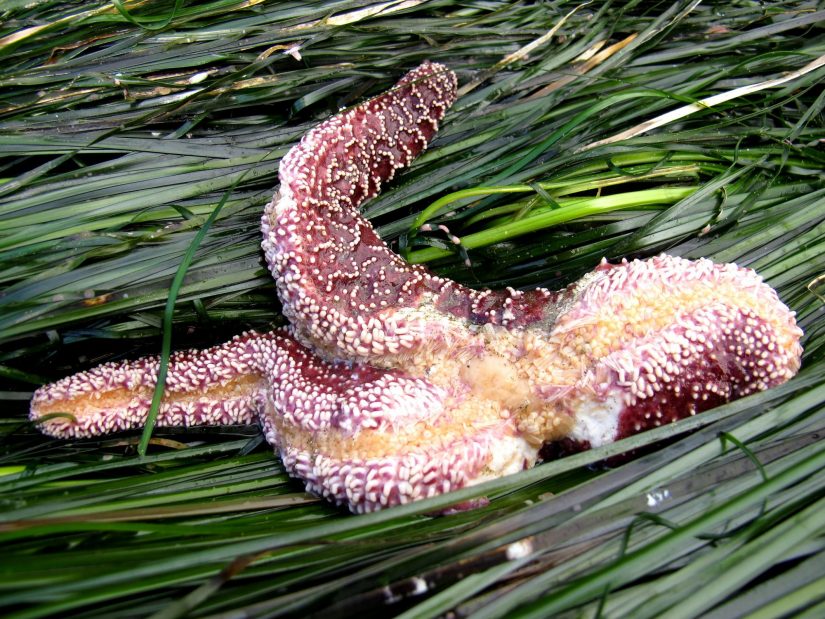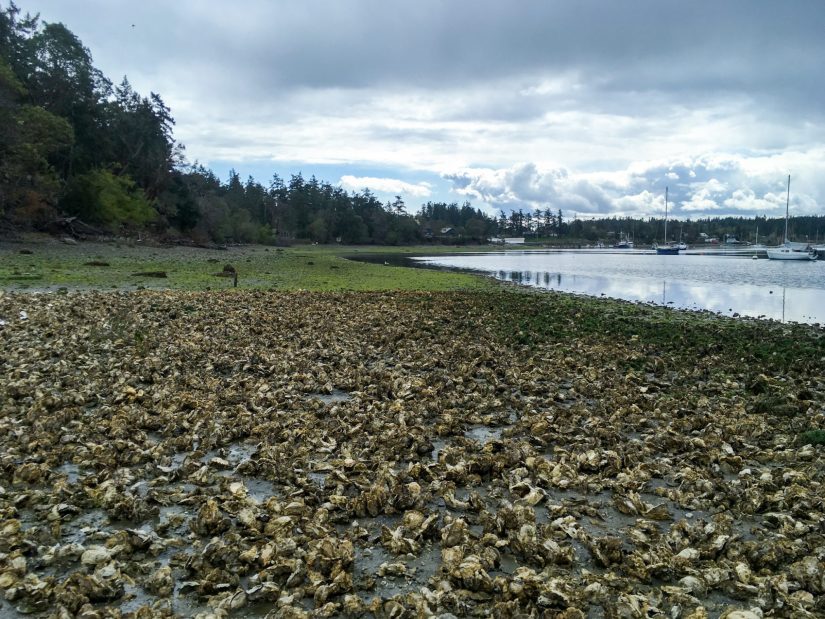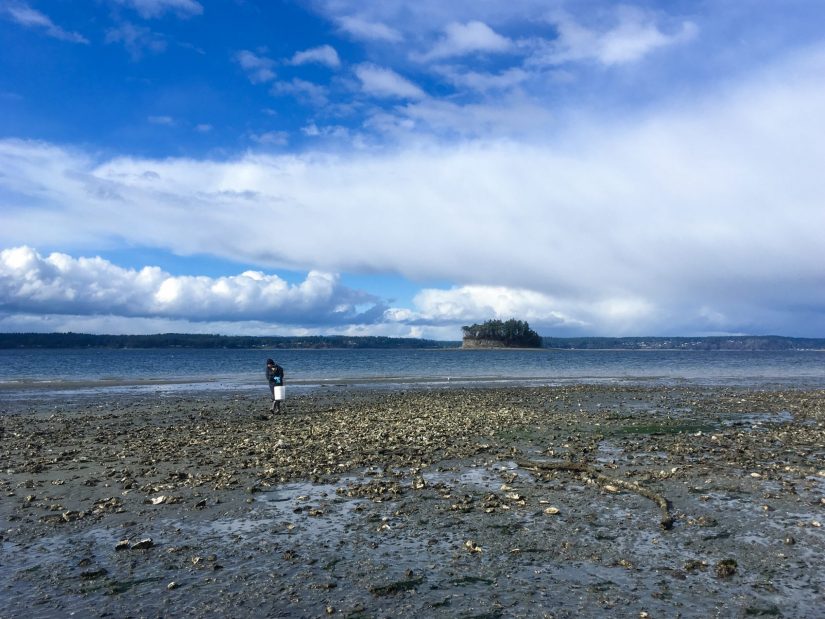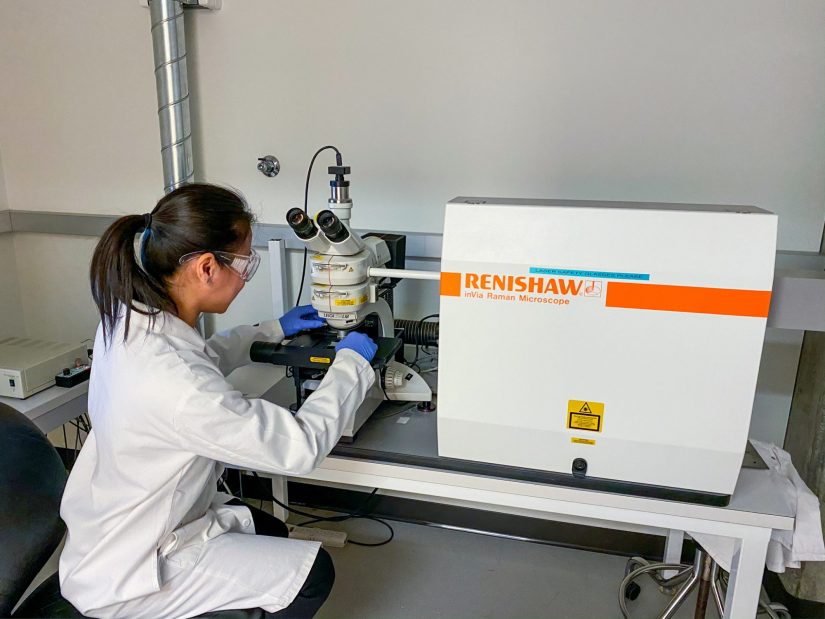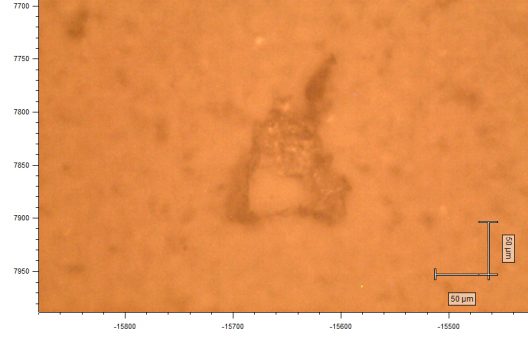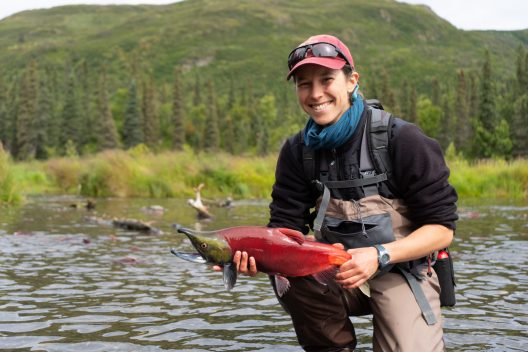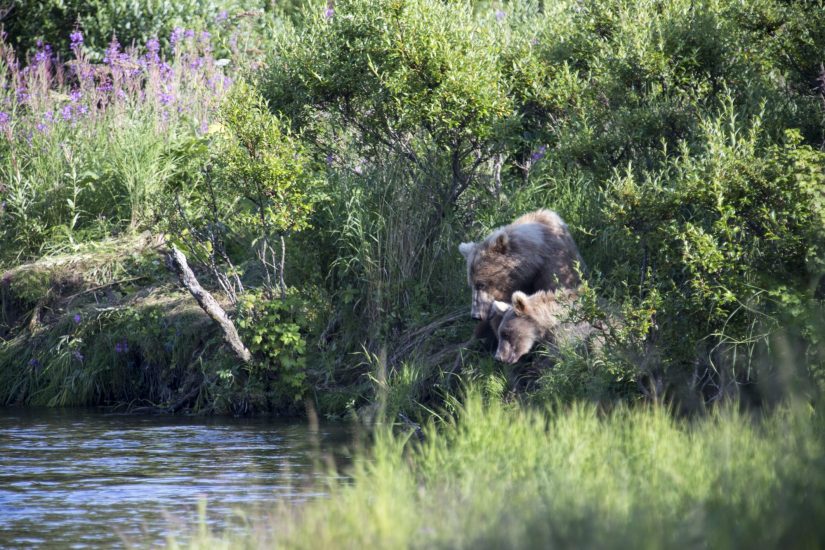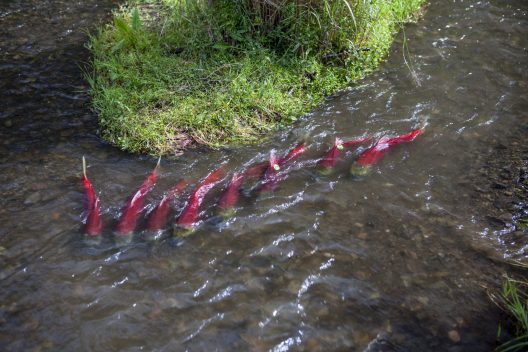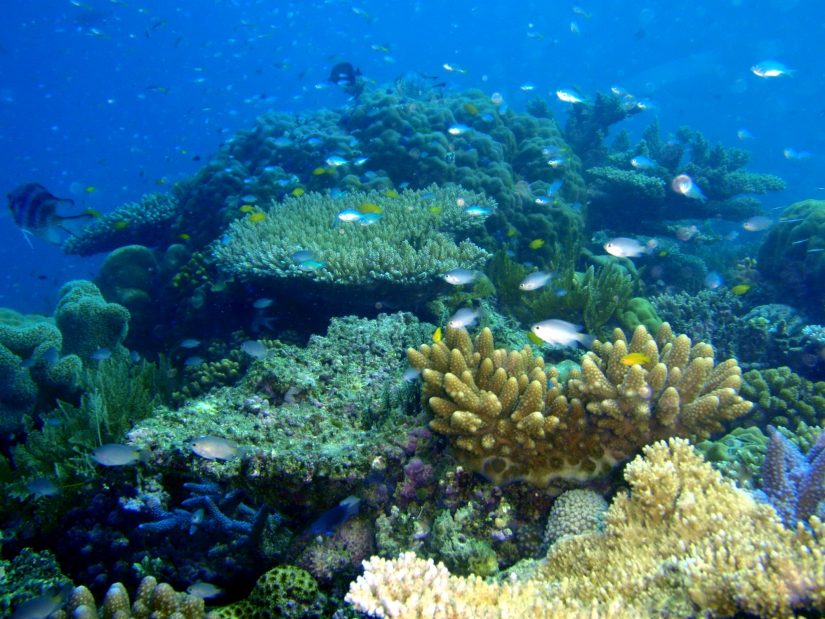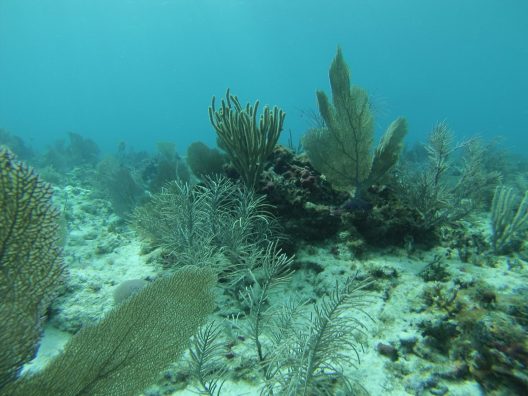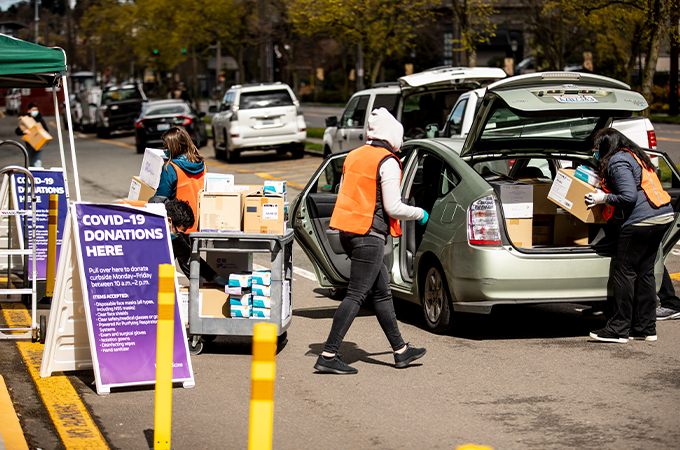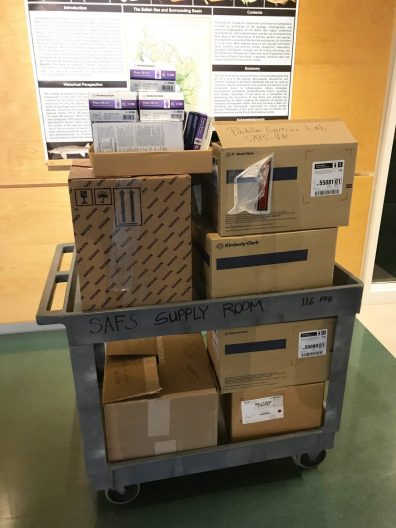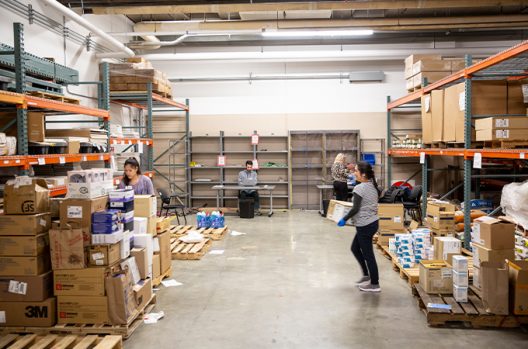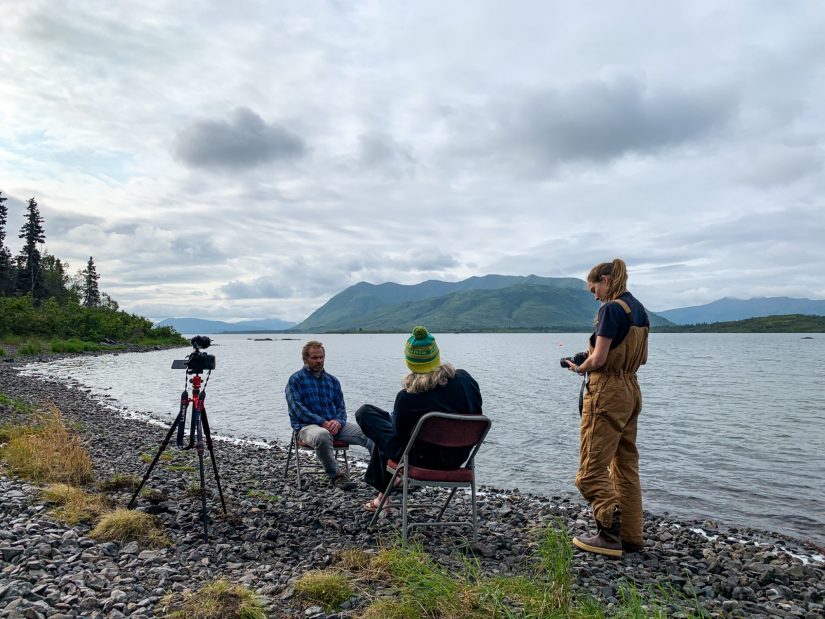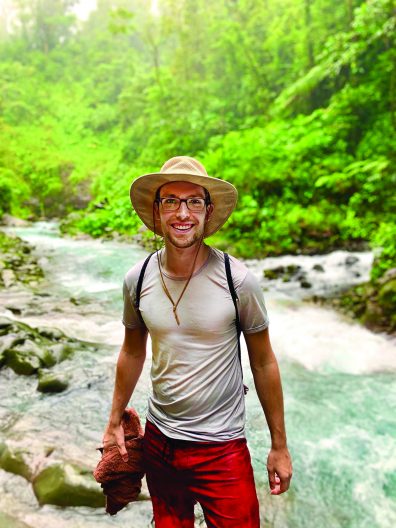A rising tide of marine disease? How parasites respond to a warming world
Warming events are increasing in magnitude and severity, threatening many ecosystems worldwide. As the global temperatures continue to climb, it also raises uncertainties as to the relationship, prevalence, and spread of parasites and disease.
A recent study from the University of Washington explores the ways parasitism will respond to climate change, providing researchers new insights into disease transmission. The paper was published in May in Trends in Ecology and Evolution.
The review builds upon previous research by adding nearly two decades worth of new evidence to build a framework showing the parasite–host relationship under climate oscillations. Traditionally, climate related research is done over long time scales, however this unique approach examines how increasingly frequent “pulse warming” events alter parasite transmission.
“Much of what is known about how organisms and ecosystems can respond to climate change has focused on gradual warming,” said lead author Danielle Claar, a postdoctoral researcher at the UW School of Aquatic and Fishery Sciences. “Climate change causes not only gradual warming over time, but also increases the frequency and magnitude of extreme events, like heat waves.”
Claar explains that both gradual warming and pulse warming can and have influenced ecosystems, but do so in different ways. Organisms may be able to adapt and keep pace with the gradual warming, but an acute pulse event can have sudden and profound impacts.
The 2013-2015 “blob” is one such extreme heat pulse event which has been linked to a massive die-off of sea stars along the Pacific coast of the U.S. and Canada. Many species of sea stars, including the large sunflower sea star, were decimated by a sudden epidemic of wasting disease. Five years later, populations in the region are still struggling to recover. The abnormally warm waters associated with the blob are thought to have favored the spread of the sea star-associated densovirus, the suggested cause of the disease.
The authors compare the prevalence of these marine diseases to a rising tide, an ebbing tide, or a tsunami. Disease transmission can rise or ebb in concert with gradual warming or a series of pulse warming events. However, a severe pulse warming event could result in a tsunami, “initiating either a deluge or drought of disease,” as was observed with sea stars along the Pacific Northwest.
However, not all pulse heat events will cause the same response. What may benefit a particular parasite or host in one system can be detrimental in another. Warming can alter a parasite’s life cycle, limit the range of suitable host species, or even impair the host’s immune response. Some flatworms which target wildlife and humans cannot survive as long in warmer waters, decreasing their window for infecting a host. Another recent UW study shows parasites commonly found in sushi are on the rise with their numbers increasing 283-fold in the past 40 years, though the relationship between heat pulse events and their abundance is not yet clear.
“The relationships between hosts, parasites, and their corresponding communities are complex and depend on many factors, making outcomes difficult to predict,” said Claar, who recommends researchers make predictions on a case-by-case basis for their individual systems.
The authors conclude that rather than a straightforward tidal prediction, they would expect pulse warming to cause “choppy seas with the occasional rogue wave.”
“It is important that we are able to understand and predict how parasitism and disease might respond to climate change, so we can prepare for, and mitigate, potential impacts to human and wildlife health,” said Claar.
The paper’s co-author is Chelsea Wood, a UW assistant professor of aquatic and fishery sciences.
This research was supported by the NOAA Climate and Global Change Postdoctoral Fellowship Program, administered by UCAR’s Cooperative Programs for the Advancement of Earth System Science (CPAESS); the US National Science Foundation; a Sloan Research Fellowship from the Alfred P. Sloan Foundation; a UW Innovation Award from the UW President’s Innovation Imperative; and a UW Royalty Research Fund Award.
Grant numbers: NA18NWS4620043B (CPAESS), OCE-1829509 (NSF)
For more information, contact Claar at danielle.claar@gmail.com.
SAFS researchers and graduates coauthor international letter addressing transboundary mining pollution

A number of UW researchers have joined an international group of science and policy experts to publish a joint commentary in the journal Science, calling on U.S. and Canadian leaders to address damages and risks caused by Canadian mine pollution flowing downstream into U.S. states. Led by researchers at the University of Montana, the cohort included five graduates and one PhD candidate from the UW School of Aquatic and Fishery Sciences (SAFS).
The letter examines Canada’s environmental assessment and regulation of large-scale industrial mines in transboundary watersheds. “Environmental baseline datasets, with which mine permitting decisions are made, are frequently insufficient and underpredict environmental impacts mines ultimately impose,” said co-author Sarah O’Neal, a UW SAFS PhD candidate in the Schindler lab. O’Neal’s current research highlights the importance of establishing transparent and peer-reviewed environmental baseline data for critical salmon habitat at the Pebble Mine site in southwest Alaska. She explains the permitting and operation of mines within transboundary watersheds are further complicated by jurisdictional and political factors.
“Pollution from mining activity, if not properly predicted, monitored, and mitigated, can cause severe environmental degradation downstream,” she said. “Mining activities are a major source of pollution throughout the western U.S., including in Washington state, where salmon runs are already experiencing historic lows.”
The complete letter can be found on the Science journal’s website.
This article was adapted from a University of Montana press release.
Pacific oysters in the Salish Sea may not contain as many microplastics as previously thought
Plastic pollution is an increasingly present threat to marine life and one which can potentially impact your dinner table.
Oysters, and other economically valuable shellfish, filter their food from the water where they may also inadvertently capture tiny microplastics. The ingestion and accumulation of these microplastics can have detrimental effects on their health and may be passed to other animals, including humans, through the food chain.
In a recent interdisciplinary study, University of Washington researchers at the School of Aquatic and Fishery Sciences, Department of Chemistry and Department of Materials Science and Engineering used advanced methodologies to accurately identify and catalog microplastics in Pacific oysters from the Salish Sea. They have discovered that the abundance of tiny microplastic contaminants in these oysters is much lower than previously thought. The findings were published in January in the journal Science of the Total Environment.
“Until now, not a lot of chemical analysis has been done on microplastics in oysters,” said co-author Samantha Phan, a UW doctoral student in chemistry. “The microplastics that chemists have looked at in previous studies are slightly bigger and easy to visually recognize, but with oysters, the microplastics are much smaller and harder to identify.”
In their study, the team sampled wild Pacific oysters harvested from Washington’s state parks throughout the Salish Sea. Using standard processing methods, the oysters’ tissue is dissolved and the remaining solution is passed through a filter. The filter collects all of the possible microplastic particles.
“Observation of filters is the method researchers have typically used, so if we had stopped there, we would have thought all the oysters had microplastics because small particles were present in most of the filters,” said lead author Julieta Martinelli, a UW postdoctoral researcher at the School of Aquatic and Fishery Sciences.
Martinelli’s initial observations under a dissecting microscope revealed what were thought to be high numbers of microplastics left behind in the testing filters, but when Phan further analyzed those filters with three advanced chemical identification techniques, they realized that most of what was left in the filters was not actually plastic.
“When we’re characterizing plastics, or any polymers in chemistry in general, we have to use multiple techniques, and not every technique will give you a full picture. It’s half a picture or just part of the picture,” said Phan. “When you put all those pictures and characterizations together, you can have a more complete understanding of what the composition or identities of these particles are.”
During their analyses, the team realized that many of the particles were, in fact, shell fragments, minerals, salts and even fibers from the testing filters themselves. In the end, they found that only about 2% of the particles distilled from the oysters could be confirmed as plastics.
“Most people so far have not used the combination of techniques or instruments that we used,” said Martinelli. “It’s really easy to stop at the first part and say, ‘Oh, there’s a lot of particles here. They look like plastic. They must be plastic.’ But when you actually go deeper into the chemical composition, they might not be.”
The number of plastic particles that the team found was relatively low compared to the total number of particles analyzed; however, they stress that while it appears Pacific oysters are not accumulating large amounts of plastic, they could not identify 40% of the particles observed due to technical limitations. The researchers also acknowledge that while using a combination of instruments is the most complete way to analyze these particles, access to the equipment, elevated costs and the extremely time-consuming nature of the work are limiting factors for widespread use.
As suspension feeders, oysters pull in water and the particles present in it when they inhale. Particles are then sorted in and out of the animal through their gills. Previous experiments have shown that when oysters are given microfibers or microbeads, they expel the majority of them either immediately or after a few hours. The hypothesis is that oysters’ gill anatomy and physiology might be the reason why the team did not see large amounts of plastic accumulation in their samples.
“A lot of this has to do with how the oysters process water through their gills and how they get rid of particles,” said Martinelli. “It doesn’t mean microplastics are not in the water, it means that the animals are better at expelling them.”
In agreement with this, it has been suggested that suspension-feeding bivalves like oysters might not be good indicators of pollution in estuaries because they naturally expel microplastics instead of ingesting them, which is good news for consumers that like eating oysters.
Other co-authors are Christine Luscombe, a UW professor of materials science and engineering, and Jacqueline Padilla-Gamiño, a UW assistant professor of aquatic and fishery sciences.
This research was supported by NOAA-SK and the Royal Research Fund awarded to Padilla-Gamiño. Part of this work was conducted at the Molecular Analysis Facility, a National Nanotechnology Coordinated Infrastructure site at the University of Washington supported in part by the National Science Foundation, the University of Washington, the Molecular Engineering & Sciences Institute and the Clean Energy Institute, and the Washington Research Foundation.
For more information, contact Martinelli at julimar@uw.edu and Phan at samphan@uw.edu.
This release was written by Dan DiNicola of the School of Aquatic and Fishery Sciences.
Grant number: NNCI-1542101 (NSF)
Sockeye salmon fuel a win-win for bears and people in Alaska’s Bristol Bay
By John Meyer
This story originally appeared on the UW College of the Environment website
In a world where valuable natural resources can be scarce, nature often loses when humans set their sights on something they want. But a new study published in the journal Ecological Applications shows that doesn’t always have to be true. Researchers found that with proper management of salmon fisheries, both humans and bears — who depend on a healthy supply of the fatty, oily fish — can thrive.
“We hear lots of stories about how fishing is decimating our oceans, and how humans are competing with wildlife,” says lead author Alexandra Lincoln. “This gives us some optimistic news instead, and highlights that if we have enough data to carefully manage fisheries and healthy habitat, we can manage a fishery to meet the needs of both wildlife and people.”
Building on a nearly two decade-long dataset, Lincoln and her colleagues looked at the relationship between wild brown bears and their staple food source, sockeye salmon in Alaska’s Wood River and Iliamna Lake watersheds. This vast network of forests, mountains, streams and rivers empties into Bristol Bay to support its world-famous salmon fishery. With intense fishing pressure on this delectable ocean-going fish, the question of whether enough fish return to the system to not only spawn — critical for supplying the next generation of fish — but also feed hungry bears is critical. Good news according to the data: yes, there is.
One of the study’s key findings shows a repeating pattern over the years of bears reaching a saturation point in terms of feasting on salmon. In other words, researchers found that bears often reach a point of satiation, and that adding more fish into the system doesn’t translate to bears eating more. And because there is no shortage of fish, the bears in many cases eat only the high energy good stuff, like the brains, bellies, eggs or the giant hump that develops on the backs of male sockeye during spawning.
“I was surprised at how regular that pattern of saturation was,” says Lincoln. “Seeing how picky these bears can be and all the leftovers, it’s hard to believe that bears would be starving and leave all these fish bits everywhere.”
It’s important to note that scientists did not see satiation occur in all years, but that doesn’t necessarily mean the bears go hungry. “Bears often forage in areas containing several adjacent spawning streams, allowing them to move back and forth among neighboring streams over the course of a day or two,” says Aaron Wirsing, professor of environmental and forest sciences and a project lead. “Thus, bears without enough food on one stream often have better fishing options nearby.”
The Wood River and Iliamna Lake watersheds are a rare place where scientists can isolate the effects of fish harvest on the health and wellbeing of bears. The watershed is relatively untouched and massive, and the study sites scientists visit are not shared by other salmon species besides sockeye. Brown bears are the major top predators in the region as black bears and wolves are rare. With only one dominant salmon species, and one dominant predator, scientists can determine cause-and-effect more precisely than in other systems where they may be other complexities.
“We can’t apply all of what we’ve learned to all systems,” says Lincoln. “This fishery is data rich” which isn’t always true for other heavily managed ecosystems that produce goods that people want. That wealth of data contributes to the success of what is regarded as one of the best managed fisheries in the world — the Bristol Bay Sockeye Salmon Fishery — and continued data collection gives researchers the ability to use decades-old data to connect management to parts of the ecosystem like brown bears.
Scientists from UW and elsewhere have been studying these watersheds for over 70 years through the Alaska Salmon Program, and collecting brown bear data for nearly 20. Under the direction of Tom Quinn, a professor of aquatic and fishery sciences and one of the Alaska Salmon Program’s lead scientists, researchers walk several creeks every day during spawning season counting salmon. They count alive fish, dead fish and fish that have been killed by bears or seagulls. They note the condition of the salmon carcass — is there just a bite of the belly, or has nearly the entire animal been consumed? This level of detail, and the time series over which the data were collected, was key to uncovering the insights they published. “Leveraging two decades of work offered us a unique opportunity to explore patterns of bear predation in relation to the ebb and flow of salmon availability,” notes Wirsing.
“Over the 20 years, we’ve counted something like 325,000 dead fish,” says Lincoln. “Some days we’ll count 10,000 live fish in a stream 2 km long. Seeing a stream chock full of fish, with wall-to-wall red salmon backs sticking out of the water, is a highlight of this work.”
Lincoln received her master’s degree at the UW School of Aquatic and Fishery Sciences working on bear-salmon interactions in Alaska, and now brings her expertise working as a senior ecologist with King County.
Get a feel of what it’s like to be a scientist collecting data in the salmon streams of the Wood River watershed in UW’s previously published story A Living Laboratory.
Anatomy of a frogfish: New book explores world of fishes with arms and legs
By Peter Kelley
This article originally appeared in UW News

Any old fish can swim. But what fish can walk, scoot, clamber over rocks, change color or pattern and even fight? That would be the frogfish.

The latest book by Ted Pietsch, UW professor emeritus of aquatic and fishery sciences, explores the lives and habits of these unusual marine shorefishes. “Frogfishes: Biodiversity, Zoogeography, and Behavioral Ecology” was published in March by Johns Hopkins University Press.
Pietsch, who is also curator emeritus of fishes at the Burke Museum of Natural History and Culture, has published over 200 articles and a dozen books on the biology and behavior of marine fishes. He wrote this book with Rachel J. Arnold, a faculty member at Northwest Indian College in Bellingham and its Salish Sea Research Center.

These walking fishes have stepped into the spotlight lately, with interest growing in recent decades. And though these predatory fishes “will almost certainly devour anything else that moves in a home aquarium,” Pietsch writes, “a cadre of frogfish aficionados around the world has grown within the dive community and among aquarists.” In fact, Pietsch said, there are three frogfish public groups on Facebook, with more than 6,000 members.
UW Notebook caught up with Pietsch for a conversation about his book and the unusual family of fishes it describes.
Helena McMonagle awarded National Science Foundation Graduate Research Fellowship
 Three graduate students from the College of the Environment have been awarded the National Science Foundation (NSF) Graduate Research Fellowship, which recognizes and supports outstanding graduate students in science, technology, engineering, and mathematics. This year’s awardees include Irita Aylward and Zoe Krauss from the School of Oceanography, and Helena McMonagle from the School of Aquatic and Fishery Sciences.
Three graduate students from the College of the Environment have been awarded the National Science Foundation (NSF) Graduate Research Fellowship, which recognizes and supports outstanding graduate students in science, technology, engineering, and mathematics. This year’s awardees include Irita Aylward and Zoe Krauss from the School of Oceanography, and Helena McMonagle from the School of Aquatic and Fishery Sciences.
NSF Fellows are anticipated to become knowledge experts who can contribute significantly to research, teaching and innovations in science and engineering. These individuals are crucial to maintaining and advancing the nation’s technological infrastructure and national security as well as contributing to the economic well-being of society at large.
Helena McMonagle studies how humans interact with the ocean and how to sustainably use marine resources, including resources in the “twilight zone” — the layer of the ocean from 200 to 1000 meters deep where little sunlight penetrates. This vast, global habitat is home to the most abundant fish species in the world, such as lanternfish and bristlemouths, yet these extremely abundant fish are largely unexploited, despite commercial interest in harvesting them for fishmeal and nutritional supplements (e.g., fish oil).
Before large-scale harvesting begins, McMonagle and her colleagues are interested in better understanding this ecosystem and the ecosystem services that these fish provide, including their contribution to the “biological carbon pump”— an important part of the carbon cycle in which marine life increases the amount of carbon the oceans absorb (about a quarter of all carbon dioxide emitted by humans). The contribution by twilight zone fish could be substantial.
Twilight zone fish contribute to the biological carbon pump because they undertake a daily vertical migration (the largest migration in the world) to the surface to feed at night, then dive back down to the twilight zone during the day to hide from predators, where they release much of the carbon they consumed at the surface.
McMonagle plans to use funding from the Graduate Research Fellowship and pre-existing data to estimate how much carbon twilight zone fish transport, how this varies across different regions in the ocean and what drives the magnitude of that part of the biological carbon pump.
“It’s an exciting opportunity to study a living marine resource, and its value to humans, before large-scale commercial harvesting may begin. I hope my research will contribute to making informed decisions about how to use this resource in the future,” says McMonagle.
Learn more about the other fellowship recipients here.
CoralChange: a project to study and protect threatened coral by global change
Coral reefs build one of the most diverse, fascinating and productive ecosystems on the planet. However, these biological structures are also highly sensitive to the adverse effects of the current climate crisis. Phenomena such as progressive bleaching and massive mortality of coral affect the marine ecosystems of the planet and endanger the future of these communities. In this context, the School of Aquatic and Fishery Science (SAFS), together with the University of Barcelona (Spain), is leading CoralChange, a project that will assess for the first time the role of larval reproduction and ecology on the long term dynamics and viability of the threatened coral populations worldwide. To do so, CoralChange counts on the funding from the European Union, and in particular from the Horizon 2020 Marie Skłodowska-Curie action fellowship. The project is coordinated by the lecturer Cristina Linares, from the University of Barcelona and assistant professor Jacqueline Padilla-Gamiño, here at SAFS. Núria Viladrich a post-doctoral researcher in the Padilla-Gamiño lab, will analyze from 2020 to 2022, the global change-induced transgenerational effects in hexacorallia and octocorals in the Caribbean.
Protecting corals from the effects of global change
With an innovative perspective, CoralChange will promote knowledge on the future of coral populations using demographical models applied to different global change scenarios. In this line, researcher Núria Viladrich will work on a series of demographic prediction models, with experimental data and field work, that will include parameters on the physiological condition, trophic plasticity, reproductive success and larval viability of corals. The project will also consider other aspects of these organisms, such as the additional energy cost of the coral ability to adjust their physiology (acclimation) and keep the biological activity under environmental change conditions. The CoralChange approach will enable the identification of potential energy costs of adaptive mechanisms regarding the ocean acidification and warming that can damage the early life stages of coral when they are at their most vulnerable. This energy cost could cause effects on the viability of the future descendants of the coral populations which are now threatened. The results of the project will be crucial to develop effective management and conservation strategies to protect coral reefs under different factors of environmental stress, as well as to identify the coral populations and species with more chances to survive under future marine environmental conditions.
College researchers, faculty and staff working together for UW Medicine
In times of extreme duress, a shining beacon of hope can come from communities working together to support one another. The University of Washington Medical Center, in preparation for an influx of patients in the coming weeks, recently put out a call for medical supplies. Researchers from around the College of the Environment answered that call, realizing that much of what the Medical Center needed were common items found in research labs, and quickly mobilized to collect donations and drop them off at UW Surplus.
School of Oceanography’s Shelly Carpenter alerted all of her Oceanography colleagues about the request for supplies when she saw an email calling for donations, including personal protective equipment (PPE). She was able to gather around 6,600 disposable gloves and numerous goggles for the Medical Center from just two buildings.
Another Oceanography researcher heeded the call as well. “At the time, hardly anyone was still coming in to do work in the Ocean Sciences Building. But I was still doing lab work, so I wrote the various lab managers and professors I knew around the building to say I could gather up any materials they wanted to donate and take them over,” said Matthew Wolhowe. “We’re all small labs with small numbers of employees and students, though. I know there are much larger labs all over campus, so if they can chip in as well, hopefully, we can really help the Med Center.”
It is important to note that although 6,600 sounds like a lot of gloves, that supply goes fast in a typical health worker’s shift.
A similar community effort was happening over at the School of Aquatic and Fishery Sciences (SAFS). SAFS faculty doing lab work came together and collected roughly 10,000 gloves, as well as other supplies like masks, disinfecting wipes and even a genotyping machine that can be used for coronavirus testing.
When asked what inspired this group effort, SAFS faculty member Sarah Converse said, “my sister is a physician assistant working as a primary care provider in Detroit, and I am keenly aware that she is now working with patients who are positive and doesn’t have adequate PPE in her clinic. It is scary for her and her family. Hopefully, we all remember that health care workers need to be kept safe because they are the ones putting themselves on the front line. And on top of it, if they are ill, we are all in much, much more trouble.”
Up north, employees at Friday Harbor Laboratories in the San Juan Islands also coordinated efforts to supply their local health care workers with extra gloves, masks and gowns. San Juan County currently is not experiencing a medical surge but is planning for one, so this PPE is ready to go. Professor Adam Summers’ lab has also 3D printed 70 face shields which have been sent to hospitals further away that can use them now.
Back on the UW Seattle campus, Wolhowe encourages lab managers to check their reserves for any masks, face shields and gloves that are unused while most of the University is working remotely. “The gloves, masks and face shields certainly aren’t doing us any good while we work from home.”
Both Converse and Wolhowe noted the ease of donating supplies at UW Surplus, and emphasized the gratitude and excitement they were met with. “The fellow who helped me unload the gear over at UW Surplus seemed very excited by the modest quantity of equipment I brought over, and called it a ‘bounty’”, noted Wolhowe.
UW Medical Center is still accepting sealed, unopened donations of disposable face masks (all types, including N95 masks), clear face shields, clear safety/medical glasses or goggles, powered air-purifying respirator (PAPR) systems, exam and surgical gloves, isolation gowns, disinfecting wipes and hand sanitizer.
NOTE: As of April 6, 2020, UW does not have any policies in place allowing for the donation of resources procured from awarded grants to COVID-19 efforts. Sponsors must provide approval for any donations, and costs of donated supplies purchased using National Science Foundation funds must currently be credited from an account for which equipment donations are an allowed expense pending agency approval. Please check the UW post-award fiscal compliance page for more information on how to donate supplies purchased with fund money.
Fish, Film & Fashion
Last year, the UW Alaska Salmon Program partnered with Waterlust, an apparel and media company, to develop a line of salmon-inspired clothing. Waterlust’s clothing line, dubbed “advocated apparel,” aims to bring awareness to aquatic science and conservation-based causes by turning designs found in nature into fashion. The company has previously worked with other institutions and nonprofits to develop prints inspired by sea turtles, whale sharks, and spotted dolphins.
The salmon line includes leggings, tops, and shorts and makes use of the fiery reds and forest greens of spawning sockeye salmon. In addition to the increased exposure for our important work in Alaska, Waterlust donates 10% of the profits from each purchase back to the Alaska Salmon Program.
Waterlust produced two short companion documentaries—one a virtual reality experience—to capture the story of salmon and share it with their customers and the greater public. We are excited to announce you can try this immersive virtual reality film yourself on one of our Oculus Go headsets in the SAFS administrative offices in the Fishery Sciences building. Both documentaries can also be seen on the Waterlust YouTube page at youtube.com/waterlust and throughout the country at select film festivals, classrooms, and museums.
To learn more about the Alaska Salmon Program, visit sites.uw.edu/aksalmon/ and for information on the collaboration with Waterlust, visit https://waterlust.com/collections/sockeye-salmon.
